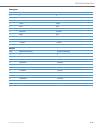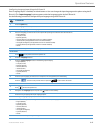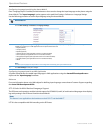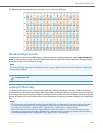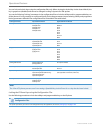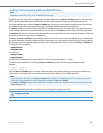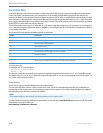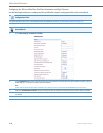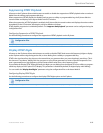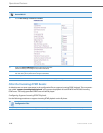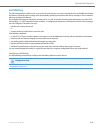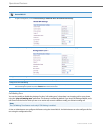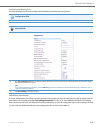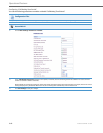
Operational Features
41-001343-02 REV04 – 05.2014 5-53
For example, if you add a prepend map of “[2-9]XXXXXXXXX,91”, the IP phone adds the digits “91” to any 10-digit number
beginning with any digit from 2 to 9 that is dialed out. Other examples of prepend mappings are:
• 1X+#,9 (Prepends 9 to any digit string beginning with “1” and terminated with “#”.)
• 6XXX,579 (Prepends “579” to any 4-digit string starting with “6”.)
•
[4-6]XXXXXX,78
(Prepends “78” to any 7-digit string starting with “4”, “5”, or “6”.)
Example:
If you enter the following dial string for a local dial plan:
sip dial plan: 1+#,9
where “9” is the prepended digit, and you dial the following number:
15551212
the IP phone automatically adds the “9” digit to the beginning of the dialed number before the number is forwarded as
915551212.
SIP Dial Plan Terminator
The IP phone provides a feature that allows an administrator to configure whether or not pressing the hash/pound (i.e. “#”)
key, while performing an outgoing call on an open line, should be sent as %23 to the proxy in the dial string or if the key
should be used as a dial plan terminator (i.e. dials out the call immediately). By default, the hash/pound key is configured
as a dial plan terminator; however, an administrator can change the behavior using the Aastra Web UI or the configuration
files.
Digit Timeout
The IP phone allows you to configure a “Digit Timeout” feature on the IP phone. The Digit Timeout is the time, in seconds,
between consecutive key presses on the IP phone’s keypad. The default for this parameter is 4 seconds. If you press a key
on the phone and wait 4 seconds before pressing the next key, the key times out and cancels the digit selection. You must
press consecutive keys before the timeout occurs.
Secondary Dial Tone
The IP phones now support a feature that allows the user to dial a predefined dial string, obtain a dial tone, and continue
dialing. A User or Administrator can configure this using the existing Dial Plan feature on the phone.
You can enter a new character string in the dial plan that allows you to configure the secondary dial tone. The character
string is of the form ".;." , where the period indicates an arbitrary number of digits and the semicolon indicates that the
phone is to present a dial tone after the previous dialed digit. For example, in the string:
"9;xxxxx"
the user dials “9” to get the outside line, listens for the dial tone, and continues to dial the applicable number. The “;” tells
the phone to present a second dial tone after the previously dialed digit. “The “xxxxx” in the example tells the phone that
a phone number is dialed after the secondary dial tone is audible.
You can enter the Secondary Dial Tone string in the Dial Plan using the configuration files or the Aastra Web UI.
You use the following parameter in the configuration files to configure a secondary dial tone:
• sip dial plan
Example:
sip dial plan: “9;5551313”
Note:
You can configure a local dial plan via the configuration files or the Aastra Web UI.
Note:
You can configure a local dial plan via the configuration files or the Aastra Web UI.



